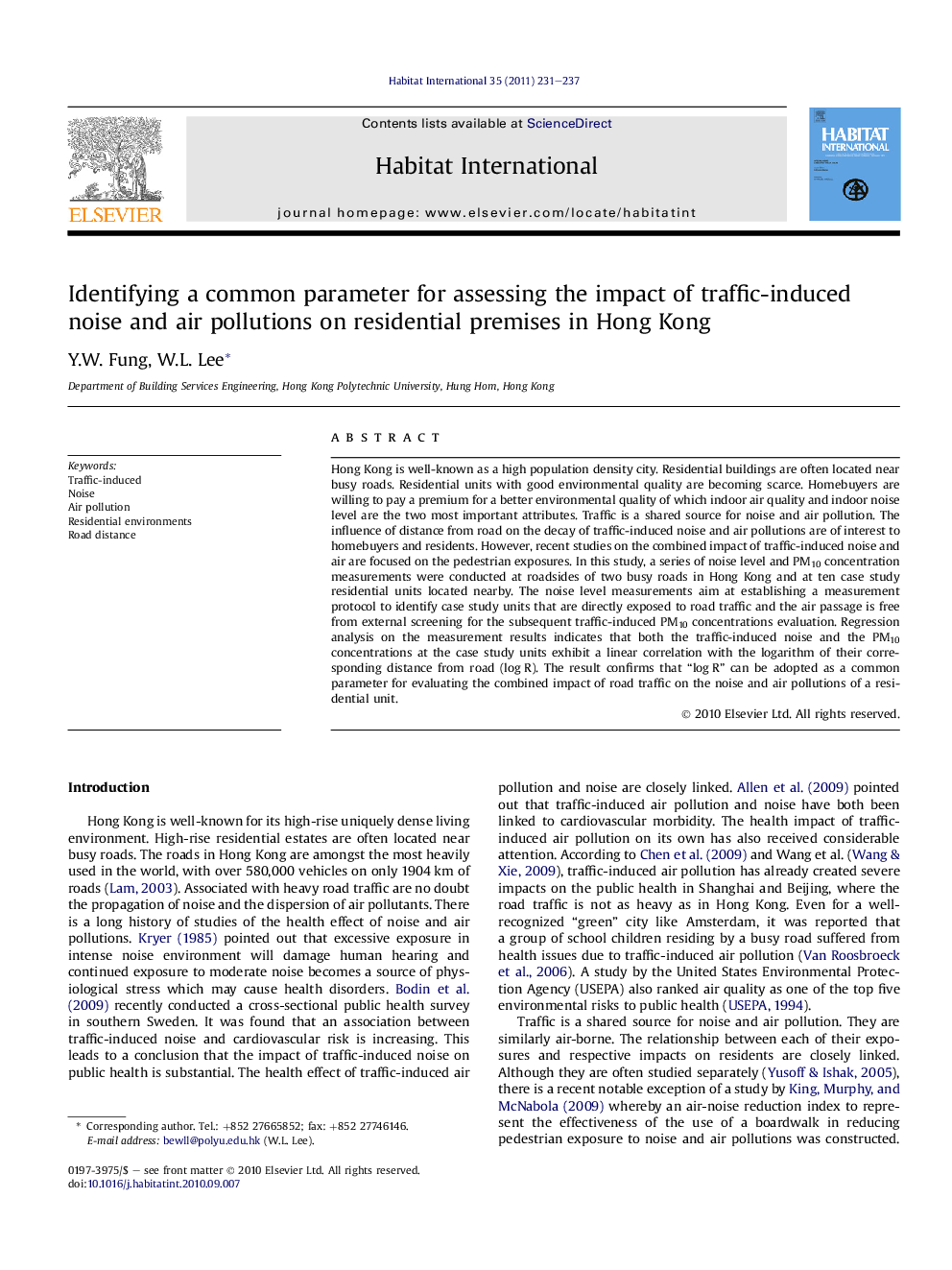| Article ID | Journal | Published Year | Pages | File Type |
|---|---|---|---|---|
| 1048005 | Habitat International | 2011 | 7 Pages |
Hong Kong is well-known as a high population density city. Residential buildings are often located near busy roads. Residential units with good environmental quality are becoming scarce. Homebuyers are willing to pay a premium for a better environmental quality of which indoor air quality and indoor noise level are the two most important attributes. Traffic is a shared source for noise and air pollution. The influence of distance from road on the decay of traffic-induced noise and air pollutions are of interest to homebuyers and residents. However, recent studies on the combined impact of traffic-induced noise and air are focused on the pedestrian exposures. In this study, a series of noise level and PM10 concentration measurements were conducted at roadsides of two busy roads in Hong Kong and at ten case study residential units located nearby. The noise level measurements aim at establishing a measurement protocol to identify case study units that are directly exposed to road traffic and the air passage is free from external screening for the subsequent traffic-induced PM10 concentrations evaluation. Regression analysis on the measurement results indicates that both the traffic-induced noise and the PM10 concentrations at the case study units exhibit a linear correlation with the logarithm of their corresponding distance from road (log R). The result confirms that “log R” can be adopted as a common parameter for evaluating the combined impact of road traffic on the noise and air pollutions of a residential unit.
